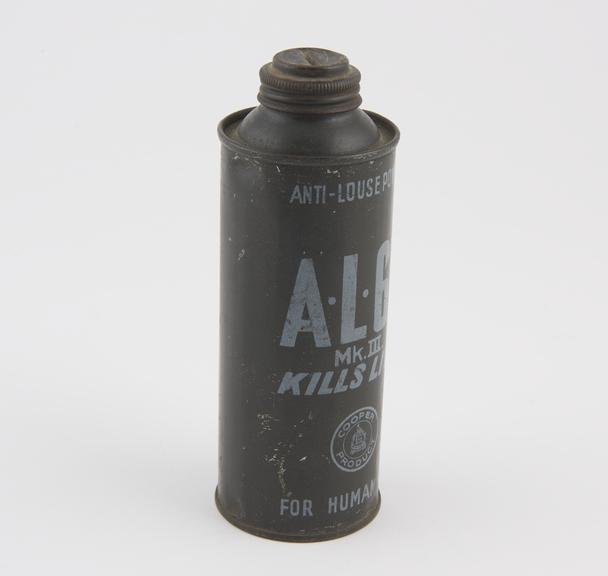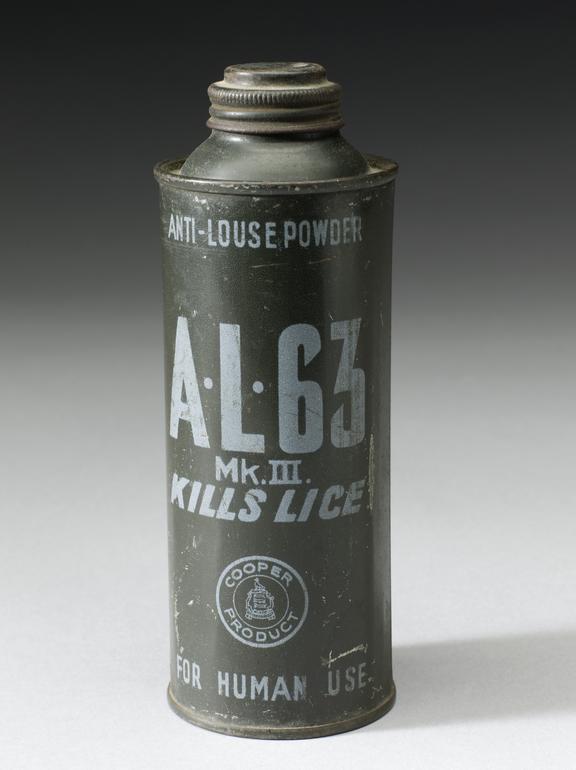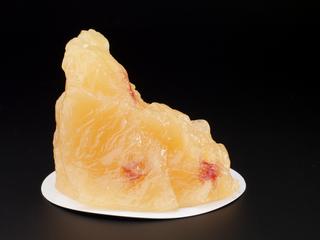
Anti-louse powder, England, 1939-1945
- Made:
- 1939-1945 in Berkhamsted




Metal can containing A.L.63 anti-louse powder, for human use, by Cooper, McDougall and Robertson Ltd., of Berkhamsted, Hertfordshire, early 20th century
Cooper, McDougall and Robertson Ltd developed and manufactured this anti-louse powder during the Second World War. It is known as the AL 63, being the 63rd preparation out of the hundred tried and tested to be selected for manufacture. It is used both to treat lice as well as protect from infestations. The dry powder was shaken over the seams of clothes. Lice were common in trench warfare and caused trench fever and typhus, putting large numbers of troops out of action. Trench fever caused fever, headaches, back and leg pain.AL 63’s main ingredient was DDT, a chemical which is fatal to some insects, but its indiscriminate use has since been banned as it is dangerous to wildlife in general.
Details
- Category:
- Public Health & Hygiene
- Object Number:
- 1987-471 Pt2
- Materials:
- can, tin
- Measurements:
-
overall: 150 mm 60 mm, .25kg
- type:
- insecticide




